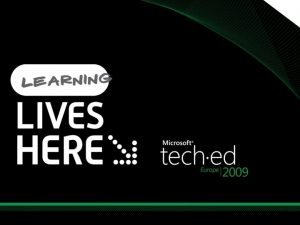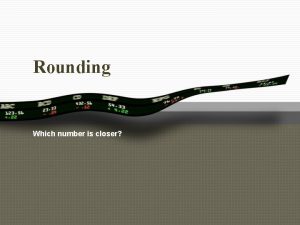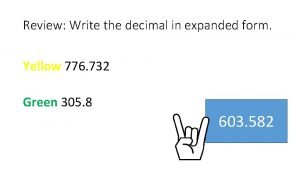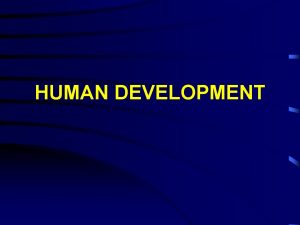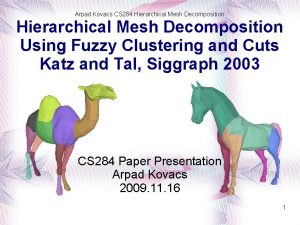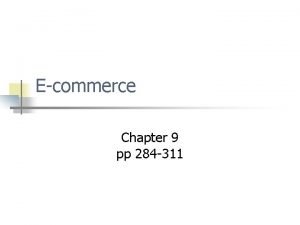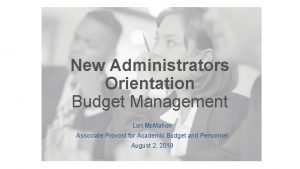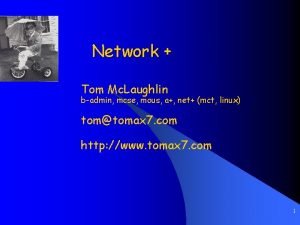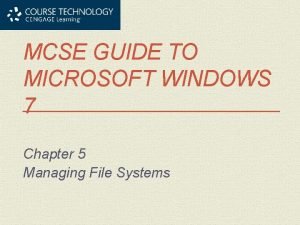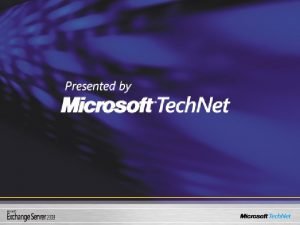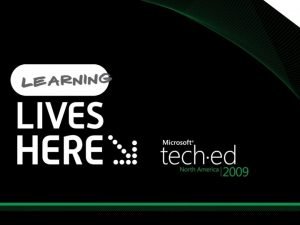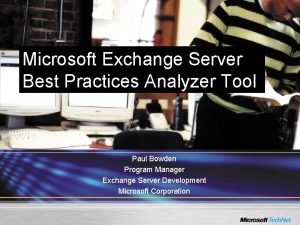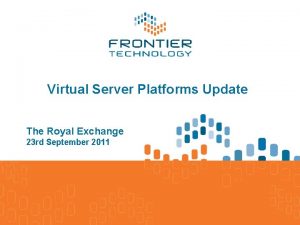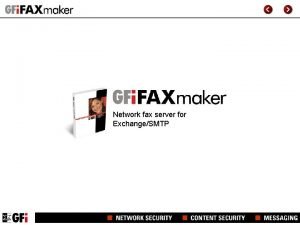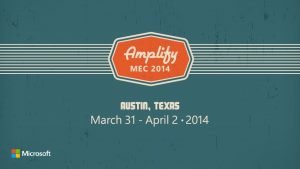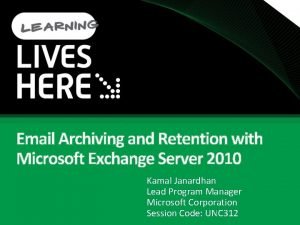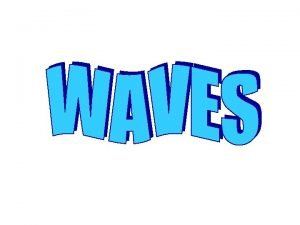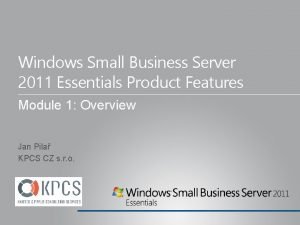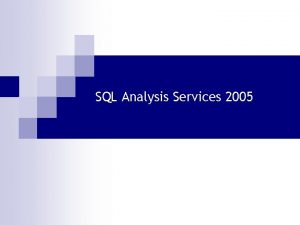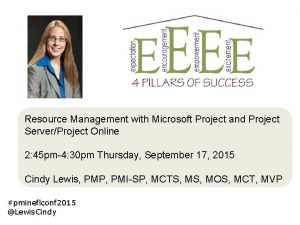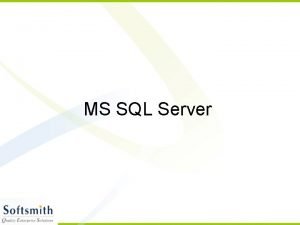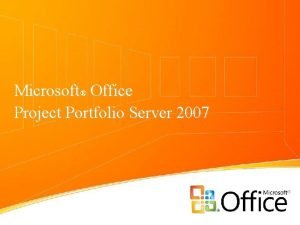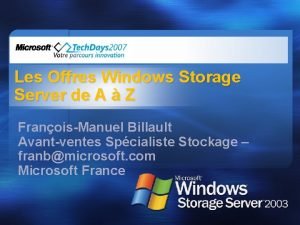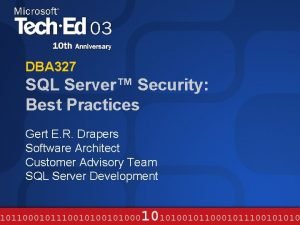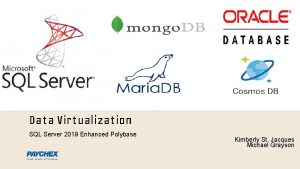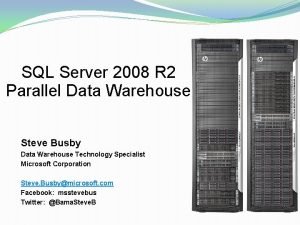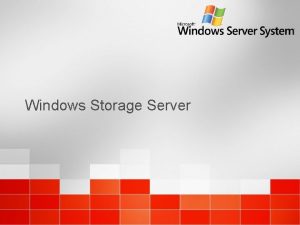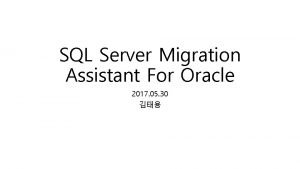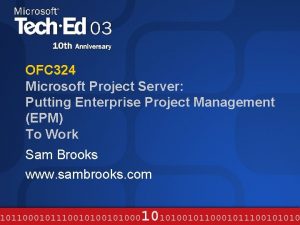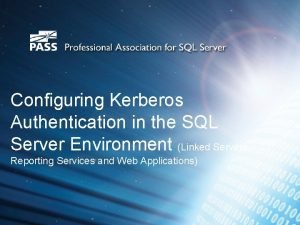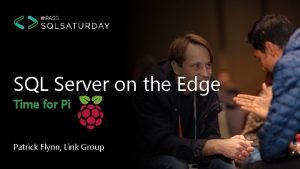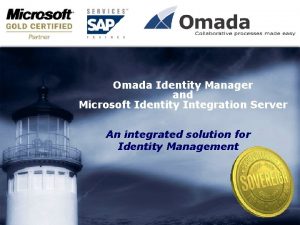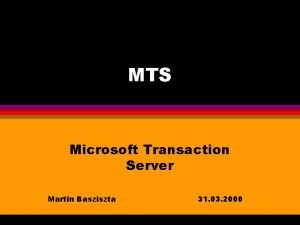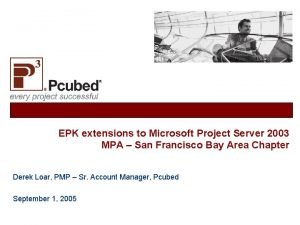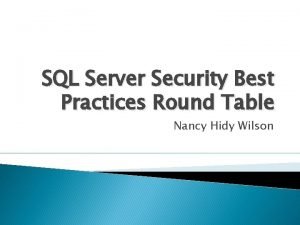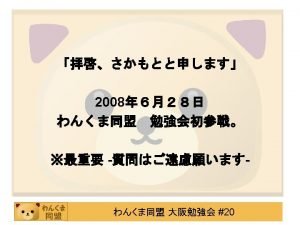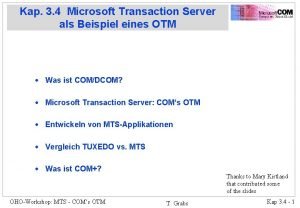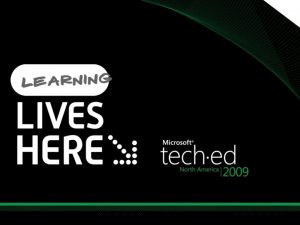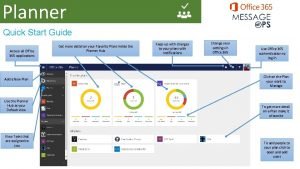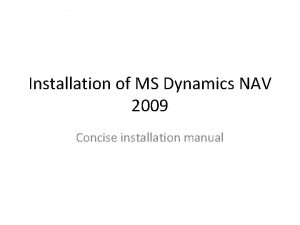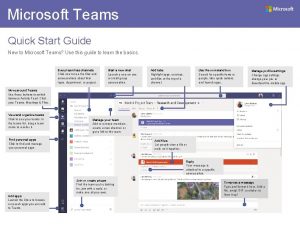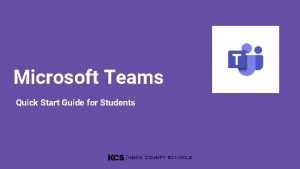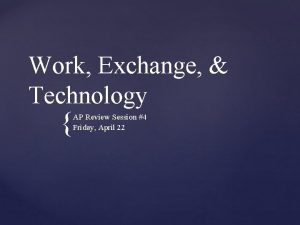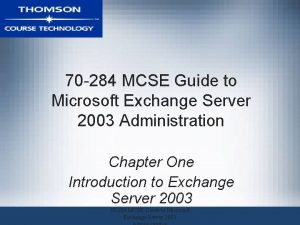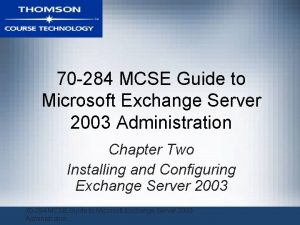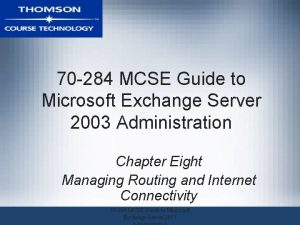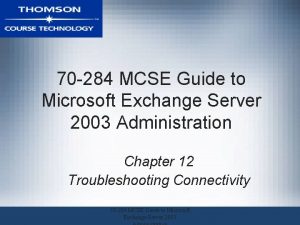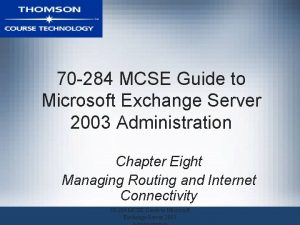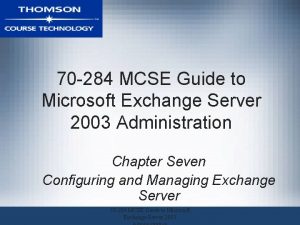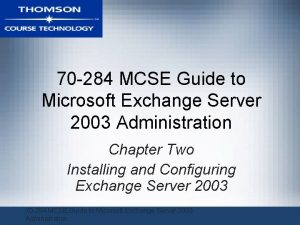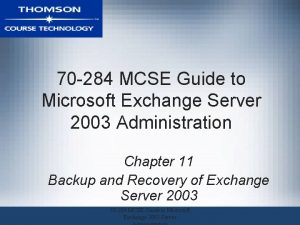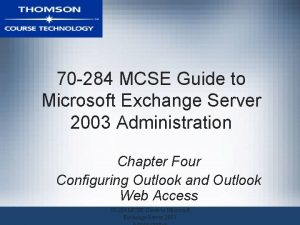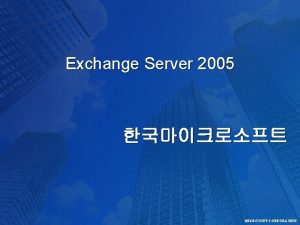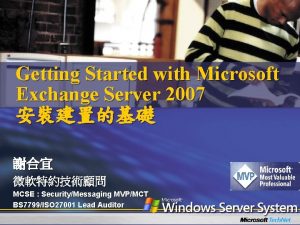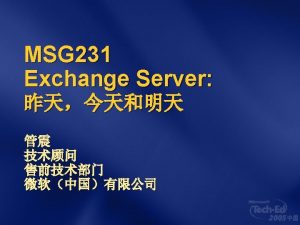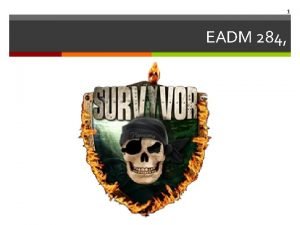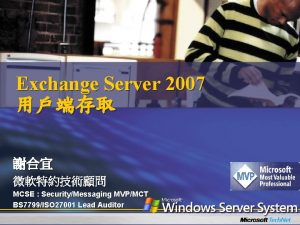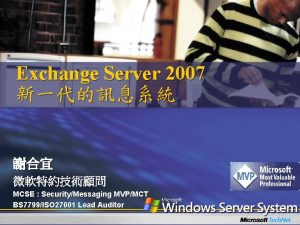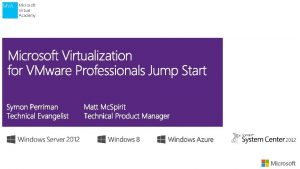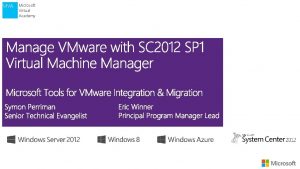70 284 MCSE Guide to Microsoft Exchange Server

































































- Slides: 65

70 -284 MCSE Guide to Microsoft Exchange Server 2003 Administration Chapter Three Managing Recipients 70 -284 MCSE Guide to Microsoft Exchange Server 2003

Objectives • Understand the different types of recipients supported by Exchange Server 2003 • Create new user, group, and contact recipient objects • Mailbox-enable existing user objects and mailenabled existing group objects 70 -284 MCSE Guide to Microsoft Exchange Server 2003 Administration 2

Objectives (continued) • Discuss query-based distribution groups • Understand configure Exchange-related recipient object settings • Understand, configure, and apply recipient policies 70 -284 MCSE Guide to Microsoft Exchange Server 2003 Administration 3

Understanding Recipients • Recipient is an object that can receive messages • Examples of recipient objects: – – – – Users Inet. Org. Person objects Contacts Security groups Distribution groups Query-based distribution groups Public folders 70 -284 MCSE Guide to Microsoft Exchange Server 2003 Administration 4

Understanding Recipients (continued) • Exchange Server 2003 supports two types of recipients: – Mailbox-enabled recipient has a mailbox located on an Exchange server – Mail-enabled recipient can be sent e-mail messages, but does not have its own Exchange mailbox 70 -284 MCSE Guide to Microsoft Exchange Server 2003 Administration 5

70 -284 MCSE Guide to Microsoft Exchange Server 2003 Administration 6

Users • Most common type of recipient created in an Exchange organization • Usually mailbox-enabled • Can be mail-enabled only 70 -284 MCSE Guide to Microsoft Exchange Server 2003 Administration 7

70 -284 MCSE Guide to Microsoft Exchange Server 2003 Administration 8

Inet. Org. Person • Object that includes a set of properties to improve compatibility with other directory services – Such as Novell’s e. Directory • Can be both mailbox-enabled and mail-enabled • Supported in environments that use Exchange Server 2003 only 70 -284 MCSE Guide to Microsoft Exchange Server 2003 Administration 9

Contacts • Objects that represent people external to a particular organization • Can only be mail-enabled • Added to the Exchange Global Address List (GAL) • May be hidden from address lists if necessary 70 -284 MCSE Guide to Microsoft Exchange Server 2003 Administration 10

Groups • Collection of objects such as: – Users – Contacts – Other groups • Active Directory supports two types of groups – Security groups – Distribution groups 70 -284 MCSE Guide to Microsoft Exchange Server 2003 Administration 11

Groups (continued) • Security groups are created for the purpose of assigning permissions and rights to users – Can be mail-enabled – All members of a group can be reached via a single e-mail address • Distribution groups cannot be assigned rights or permissions – Used to send messages to a collection of users 70 -284 MCSE Guide to Microsoft Exchange Server 2003 Administration 12

Query-based Distribution Groups • Objects created when an Exchange organization is running in native mode – Member lists updated dynamically with Lightweight Directory Access Protocol (LDAP) query • Can be mail-enabled 70 -284 MCSE Guide to Microsoft Exchange Server 2003 Administration 13

Public Folders • Public Folders are Storage areas for e-mail messages and files in an Exchange organization • Must be configured as mail-enabled recipients 70 -284 MCSE Guide to Microsoft Exchange Server 2003 Administration 14

Creating User, Group, and Contact Recipients • The most common task associated with managing recipients include: – – – Creating new mailbox-enabled users Mailbox-enabling existing users Creating new mail-enabled groups Mail-enabling existing groups Creating new mail-enabled contacts 70 -284 MCSE Guide to Microsoft Exchange Server 2003 Administration 15

Creating New Mailbox-enabled Users • Create a new user object with Active Directory Users and Computers • Account creation wizard gives the option of creating an associated Exchange mailbox 70 -284 MCSE Guide to Microsoft Exchange Server 2003 Administration 16

Activity 3 -1: Creating Mailbox-enabled Users • Time Required: 15 minutes • Objective: Create new mailbox-enabled user objects • Description: One of the most common tasks associated with managing an Exchange organization is creating new mailbox-enabled recipients during the user object creation process 70 -284 MCSE Guide to Microsoft Exchange Server 2003 Administration 17

70 -284 MCSE Guide to Microsoft Exchange Server 2003 Administration 18

70 -284 MCSE Guide to Microsoft Exchange Server 2003 Administration 19

Mailbox-enabling Existing Users • User and group objects need to be mailbox-enabled (or mail-enabled) • The tool used to mailbox-enable and mail-enable existing objects is Exchange Task Wizard in Active Directory Users and Computers 70 -284 MCSE Guide to Microsoft Exchange Server 2003 Administration 20

Activity 3 -2: Mailbox-enabling an Existing User Object • Time Required: 15 minutes • Objective: Mailbox-enable an existing user object • Description: Existing user objects might have been created prior to Exchange being installed, whereas others might have originally been added without creating an associated mailbox 70 -284 MCSE Guide to Microsoft Exchange Server 2003 Administration 21

70 -284 MCSE Guide to Microsoft Exchange Server 2003 Administration 22

70 -284 MCSE Guide to Microsoft Exchange Server 2003 Administration 23

70 -284 MCSE Guide to Microsoft Exchange Server 2003 Administration 24

Creating New Mail-enabled Groups • Security or distribution group is created in an environment that includes Exchange Server • The wizard that walks you through the process including an option to mail-enable the group 70 -284 MCSE Guide to Microsoft Exchange Server 2003 Administration 25

Activity 3 -3: Creating Mail-enabled Groups • Time Required: 15 minutes • Objective: Raise a domain to the Windows Server 2003 functional level and then create a new mailenabled universal distribution group • Description: To simplify the process of sending email messages to large groups of users, mailenabled distribution groups are commonly used 70 -284 MCSE Guide to Microsoft Exchange Server 2003 Administration 26

70 -284 MCSE Guide to Microsoft Exchange Server 2003 Administration 27

70 -284 MCSE Guide to Microsoft Exchange Server 2003 Administration 28

Mail-enabling Existing Groups • Mailbox-enable an existing user after Exchange is installed • Also mail-enable existing security and distribution groups 70 -284 MCSE Guide to Microsoft Exchange Server 2003 Administration 29

Activity 3 -4: Mail-enabling an Existing Group • Time Required: 10 minutes • Objective: Mail-enable an existing security group • Description: Existing group objects might have been created prior to Exchange being installed, whereas others might have originally been added without creating an associated mailbox 70 -284 MCSE Guide to Microsoft Exchange Server 2003 Administration 30

70 -284 MCSE Guide to Microsoft Exchange Server 2003 Administration 31

Expanding Mail-enabled Groups • Expanding a group is determining its individual members • Process is resource intensive if the group contains many members • Possible to designate a particular Exchange server as an expansion server – Reduces the load on other servers 70 -284 MCSE Guide to Microsoft Exchange Server 2003 Administration 32

Viewing the e-mail address associated with a group 70 -284 MCSE Guide to Microsoft Exchange Server 2003 Administration 33

Creating Mail-enabled Contacts • Contacts are mail-enabled (not mailbox-enabled) – Can only receive messages 70 -284 MCSE Guide to Microsoft Exchange Server 2003 Administration 34

Activity 3 -5: Creating a Mail-enabled Contact and Adding It to a Distribution Group • Time Required: 10 minutes • Objective: Create a mail-enabled contact and then add it to a distribution group • Description: Contact objects store details about users external to an organization 70 -284 MCSE Guide to Microsoft Exchange Server 2003 Administration 35

70 -284 MCSE Guide to Microsoft Exchange Server 2003 Administration 36

70 -284 MCSE Guide to Microsoft Exchange Server 2003 Administration 37

Query-Based Distribution Groups • Allows membership of a distribution group to be built according to the results of an LDAP query • Combined as members of a single, normal distribution group to provide a greater flexibility • Computationally taxing for an Exchange server 70 -284 MCSE Guide to Microsoft Exchange Server 2003 Administration 38

Creating Query-based Distribution Groups • First define an LDAP query • No query knowledge necessary – Find Exchange Recipient window used to create the query in the same manner as searching for a recipient 70 -284 MCSE Guide to Microsoft Exchange Server 2003 Administration 39

Activity 3 -6: Creating a Query-based Distribution Group • Time Required: 15 minutes • Objective: Create a query-based distribution group • Description: Query-based distribution groups are built from the results of an LDAP query to dynamically add members to a group based on the specified search criteria 70 -284 MCSE Guide to Microsoft Exchange Server 2003 Administration 40

70 -284 MCSE Guide to Microsoft Exchange Server 2003 Administration 41

70 -284 MCSE Guide to Microsoft Exchange Server 2003 Administration 42

Configuring Recipient Settings • Tabs added to properties in Active Directory Users and Computers – – E-mail Addresses Exchange General Exchange Advanced Exchange Features 70 -284 MCSE Guide to Microsoft Exchange Server 2003 Administration 43

E-mail Addresses • Lists all e-mail addresses assigned to that object • By default, objects have two e-mail addresses assigned: – SMTP address – X. 400 address • Other addresses for the object can be modified 70 -284 MCSE Guide to Microsoft Exchange Server 2003 Administration 44

Exchange General • Allows configuration of general Exchange settings that apply to mailbox-enabled and mail-enabled recipients • Configurable settings include: – – – Mailbox store Alias Delivery Restrictions Delivery Options Message Size Storage Limits 70 -284 MCSE Guide to Microsoft Exchange Server 2003 Administration 45

Activity 3 -7: Configuring E-mail Address and Exchange General Settings • Time Required: 15 minutes • Objective: Configure E-mail Address and Exchange General tab settings • Description: Configure settings on the E-mail Address and Exchange General tabs in the properties of a mailbox-enabled user object 70 -284 MCSE Guide to Microsoft Exchange Server 2003 Administration 46

70 -284 MCSE Guide to Microsoft Exchange Server 2003 Administration 47

70 -284 MCSE Guide to Microsoft Exchange Server 2003 Administration 48

Exchange Features • Found in the properties of a mailbox-enabled user and Inet. Org. Person objects • Used to control user access to Exchange features, such as mobile services or protocols 70 -284 MCSE Guide to Microsoft Exchange Server 2003 Administration 49

Activity 3 -8: Configuring Exchange Features Settings • Time Required: 10 minutes • Objective: Configure Exchange Features tab settings • Description: The Exchange Features tab in the properties of a mailbox-enabled recipient allows you to enable or disable access to different mobile services and protocols 70 -284 MCSE Guide to Microsoft Exchange Server 2003 Administration 50

70 -284 MCSE Guide to Microsoft Exchange Server 2003 Administration 51

Exchange Advanced • Allows configuration of advanced Exchange-related settings for mailbox-enabled and mail-enabled recipients 70 -284 MCSE Guide to Microsoft Exchange Server 2003 Administration 52

Exchange Advanced (continued) • The settings found on this tab for a mailboxenabled user and Inet. Org. Person objects include: – – – Simple display name Hide from Exchange address lists Downgrade high priority mail bound for X. 400 Custom Attributes ILS Settings Mailbox Rights 70 -284 MCSE Guide to Microsoft Exchange Server 2003 Administration 53

Exchange Advanced (continued) • Settings on the Exchange Advanced tab that are specific to mail-enabled group recipients include: – Expansion Server – Out-of-office replies – NDR (non-delivery report) settings 70 -284 MCSE Guide to Microsoft Exchange Server 2003 Administration 54

Activity 3 -9: Configuring Exchange Advanced Settings • Time Required: 10 minutes • Objective: Configure Exchange Advanced tab settings • Description: Settings on the Exchange Advanced tab in the properties of a mailbox-enabled recipient configure everything from custom attributes to mailbox rights 70 -284 MCSE Guide to Microsoft Exchange Server 2003 Administration 55

70 -284 MCSE Guide to Microsoft Exchange Server 2003 Administration 56

Recipient Policies • Recipient Policies are rules applied to selected users and groups • Apply additional e-mail addresses to users who meet the configured criteria 70 -284 MCSE Guide to Microsoft Exchange Server 2003 Administration 57

Understanding Recipient Policy Application • All recipients fall under the scope of the Default recipient policy • Policies are assigned a priority value that controls the order in which the policies are examined and replied • Policies with a lower priority are ignored 70 -284 MCSE Guide to Microsoft Exchange Server 2003 Administration 58

Creating and Applying Recipient Policies • Policies are applied according to the schedule configured in the properties of the Recipient Update Service for the domain 70 -284 MCSE Guide to Microsoft Exchange Server 2003 Administration 59

Activity 3 -10: Creating and Applying Recipient Policies • Time Required: 20 minutes • Objective: Create and apply a recipient policy • Description: Recipient policies make it easy for an administrator to centralize the management of recipient e-mail addresses and mailbox management options 70 -284 MCSE Guide to Microsoft Exchange Server 2003 Administration 60

70 -284 MCSE Guide to Microsoft Exchange Server 2003 Administration 61

Summary • Recipients in an Exchange organization include user, Inet. Org. Person, contact, security and distribution group, query-based distribution group, and public folder objects • Recipients that are mailbox-enabled can send and receive messages and have storage mailbox • Recipients that are mail-enabled can receive messages only, and do not have a mailbox assigned 70 -284 MCSE Guide to Microsoft Exchange Server 2003 Administration 62

Summary (continued) • Objects that can be mailbox-enabled include user and Inet. Org. Person objects • Objects that can be mail-enabled included user, Inet. Org. Person, contact, security group, distribution group, query-based distribution group, and public folder objects 70 -284 MCSE Guide to Microsoft Exchange Server 2003 Administration 63

Summary (continued) • New objects can be mailbox-enabled or mailenabled as part of the creation process after Exchange is installed • Existing objects can be mailbox-enabled or mailenabled using Exchange Task Wizard in Active Directory Users and Computers • Query-based distribution groups are a new feature in Exchange Server 2003 70 -284 MCSE Guide to Microsoft Exchange Server 2003 Administration 64

Summary (continued) • Exchange-specific settings in the properties of recipient objects are configured from the E-mail Addresses, Exchange General, Exchange Advanced, and Exchange Features tabs • Recipient policies are used to simplify and centralize the management of recipient settings for e-mail addresses and mailbox management processes 70 -284 MCSE Guide to Microsoft Exchange Server 2003 Administration 65
 Mcse exchange server
Mcse exchange server Microsoft mcsa private cloud
Microsoft mcsa private cloud Microsoft forefront protection 2010 for exchange server
Microsoft forefront protection 2010 for exchange server Microsoft forefront security for exchange server
Microsoft forefront security for exchange server Round 284 to the nearest ten.
Round 284 to the nearest ten. 281-284-0027
281-284-0027 305 in word form
305 in word form 284 ad
284 ad 284
284 Cs 284
Cs 284 When diocletian took power in a.d. 284, he
When diocletian took power in a.d. 284, he 284
284 284-pwrm
284-pwrm Mc mcse
Mc mcse Mcse windows 7
Mcse windows 7 Mcp mcse
Mcp mcse Real exchange rate formula
Real exchange rate formula Pearl exchange activity
Pearl exchange activity Gas exchange key events in gas exchange
Gas exchange key events in gas exchange Exchange control panel 2010
Exchange control panel 2010 311 sever
311 sever Exchange performance analyzer
Exchange performance analyzer Exchange virtual server
Exchange virtual server Fax serveur
Fax serveur Cb exchange server sync
Cb exchange server sync Virtual exchange server
Virtual exchange server Exchange 2010 email archiving
Exchange 2010 email archiving Microsoft onpremises mitigation
Microsoft onpremises mitigation Microsoft exchange
Microsoft exchange Microsoft windows small business server 2011 essentials
Microsoft windows small business server 2011 essentials Windows small business server 2011 end of life
Windows small business server 2011 end of life Microsoft sql server 2005 analysis services
Microsoft sql server 2005 analysis services Microsoft project server resource management
Microsoft project server resource management Sql server machine learning services
Sql server machine learning services Microsoft sql server introduction
Microsoft sql server introduction Microsoft project portfolio server
Microsoft project portfolio server Ms storage server
Ms storage server Loginsscan
Loginsscan Sql server data virtualization
Sql server data virtualization Sql server 2005 express management studio
Sql server 2005 express management studio Microsoft sql server 2012 parallel data warehouse
Microsoft sql server 2012 parallel data warehouse What is microsoft epm
What is microsoft epm Microsoft windows storage server 2003
Microsoft windows storage server 2003 Upgrade 2003 to 2008
Upgrade 2003 to 2008 Sql server migration assistant for sybase
Sql server migration assistant for sybase Microsoft project server demo
Microsoft project server demo Microsoft kerberos configuration manager for sql server
Microsoft kerberos configuration manager for sql server Microsoft sql server raspberry pi
Microsoft sql server raspberry pi Microsoft identity manager tutorial
Microsoft identity manager tutorial Mts explorer
Mts explorer Mpa timesheet
Mpa timesheet Microsoft sql server security best practices
Microsoft sql server security best practices Sql server compact
Sql server compact Microsoft transaction server
Microsoft transaction server Microsoft host integration server
Microsoft host integration server Planner quick start
Planner quick start Microsoft dynamics nav 2009 installation guide
Microsoft dynamics nav 2009 installation guide Ms teams quick start guide
Ms teams quick start guide Teams quick start guide
Teams quick start guide Microsoft official academic course microsoft word 2016
Microsoft official academic course microsoft word 2016 Microsoft official academic course microsoft excel 2016
Microsoft official academic course microsoft excel 2016 Microsoft microsoft edge startwarren theverge
Microsoft microsoft edge startwarren theverge Microsoft+excel+merupakan+program+aplikasi
Microsoft+excel+merupakan+program+aplikasi Microsoft official academic course microsoft word 2016
Microsoft official academic course microsoft word 2016 Where did garlic come from in the columbian exchange
Where did garlic come from in the columbian exchange Work, exchange and technology
Work, exchange and technology


